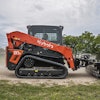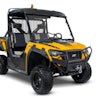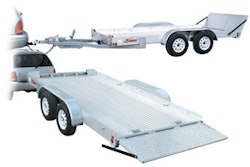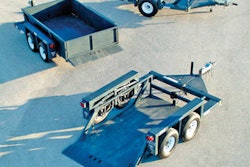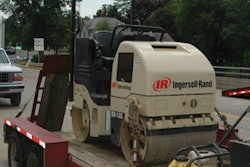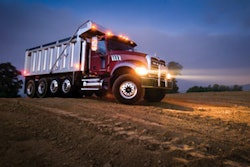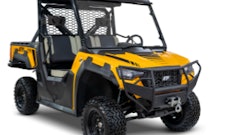
U nderstanding the day-to-day owning and operating costs is crucial to managing your vocational trucks. "At the end of the day, you need to know what the value of your vehicle is and what it is costing you on a daily basis," says Steve Higgs, medium-duty truck marketing manager, General Motors.
Accurately tracking the overall life-cycle costs is a powerful management tool. "Close tracking of life-cycle costs is especially important to ensure profitability in your business," says Matt Gervais, product manager, Sterling Truck Corp., "and for making future truck buying decisions."
One of the first considerations is the purchase price and how it is depreciated over time. "But then you have the operational side, which is all of the fuel costs and all of the maintenance costs," says Mike Eaves, product manager, medium-duty trucks, General Motors. "And it is not just the truck we are talking about, but any equipment installed on the truck, as well. Really, it is the total operating cost of the vehicle. You have to look at it from a holistic approach. It is one piece of capital equipment with the body installed."
Determine cost drivers
The largest component of life-cycle costs really depends on how long you intend to keep the truck. "If you are keeping these vehicles 10 or 15 years, the service and fuel costs are going to add up to a considerable amount," says Higgs. But if you keep vehicles an average of eight years, he estimates one-third of your life-cycle costs is likely front-end expense; another third is the cost to run the vehicle, including maintenance and fuel; and the remainder is residual.
When calculating costs over the life of a vehicle, Gervais recommends taking the following into account: regular preventive maintenance (oil, tires, chassis lubrication, etc.); unscheduled repairs (breakdowns, accidents); and fuel consumption. "Variations in fuel price affect the total life-cycle cost, especially if an operator is operating over several regions," he points out.
While preventive maintenance is initially a cost item, it will save you money in the long haul. "A regimented preventive maintenance program is the best and least expensive way to maximize the economical life of your vocational vehicle," says Gervais. "Without preventive maintenance, small problems can develop quickly into large, costly repairs."
In addition, regular inspections can save downtime. "At construction sites, these vehicles are going through a lot of additional wear that they would not have if they were just on the road," says Higgs. "You need to have regular inspections and maintenance. It adds to the cost, but it is also a savings. You can spot things you would not otherwise catch. Just cleaning them makes a difference."
There are other ways to reduce maintenance costs without sacrificing reliability. Proper application of the vehicle is one example. "A vocational truck should be operated within its abilities based on its specifications," says Gervais. "Operating it beyond its scope of work will result in unscheduled repairs."
Extended drain intervals are another example. "Extended oil drain intervals will help reduce the cost of preventive maintenance and scheduled downtime," says Gervais.
Many times, extended drain intervals are possible due to synthetic lubricants. "In medium-duty trucks, we have probably been the leader in using synthetic lube in transmissions and axles," says Eaves. "It removes that maintenance item." Oil changes for transmissions and axles can be extended out to 250,000 miles.
In some cases, you may find it's more economical and efficient to turn the maintenance over to a dealer. For instance, General Motors offers a service called FleeTrac. "You sign up and it is almost like a centralized payment process," says Eaves. "If you are a company that is spread across the U.S., you can take your trucks into a dealer and there is centralized billing."
Spend time on specs
"Maintenance is the key to cost control for the vocational customer," states Jim Zito, vocational sales manager, Peterbilt Motors Co. "However, selecting the best equipment possible and correctly spec'ing the vehicle also contribute to overall life-cycle costs."
Great care must be taken when developing specs to ensure they meet the needs of the intended application, says Gervais. "Under-spec'ing the vocational truck can lead to premature component failures, which demand additional unscheduled repairs and increase life-cycle costs," he notes. "Over-spec'ing adds unnecessary weight to the vehicle, increasing the cost of daily operation through lowered fuel economy."
Improper spec'ing of components also adds to operating costs. "If the wrong axles, transmissions, traction devices or any major component is spec'd incorrectly, the truck will not operate efficiently," says Zito.
All of these common spec'ing mistakes increase downtime and maintenance costs. Yet, they can be largely avoided by consulting your local dealer.
"Work closely with a dedicated truck sales professional to help you make good spec decisions for your application," Zito advises. They can also keep you up to date on the latest technologies available to increase efficiency and reduce upfront costs.
An example is the availability of gas engines on medium-duty trucks. "Diesel engines in medium-duty trucks have increased in price in the range of $5,000 as a net charge to the customer," says Eaves. So it pays to examine your application to see if a gas engine can meet your needs.
Clearly, there are limitations with this size class. "Obviously, the PTO is not as ideal for gas engines as for diesel engines" says Higgs.
A gas engine is also not the best choice for a heavy dump truck application. "But there are applications where [the truck] is not going to do a tremendous amount of idling or a lot of mileage," Eaves notes. In these cases, a gas power source could be a cost-effective alternative.
In other words, keep your options open. "Past experience is good," says Eaves. "But we are in a changing world, and sometimes there are newer ways that are perhaps better than the old ways. So it is important that you understand what new developments might help."
Once trucks are properly spec'd for the task, life-cycle costs can serve as a basis for comparison between brands. "If two competitive brand vehicles are spec'd correctly for the same application (within the confines of the OEMs' option availability), then close scrutiny of life-cycle costs between them will provide a fairly accurate life-cycle performance comparison," says Gervais.
"Total cost of ownership and resale value are great tools to compare brands and products," agrees Zito.
Assess useful life
By tracking life-cycle costs, you can also determine if the ongoing cost of operation of the truck outweighs the cost of borrowing money to purchase a new vehicle, Gervais points out. If it does, it's time to consider a new purchase.
In some cases, however, it may prove more cost effective to refurbish an older vehicle. "Consider the costs of potential refurbishment and how much time that will add to the vehicle in terms of economical operation," says Gervais. If it brings the truck to the point where it can be operated at a life-cycle cost less than the cost to borrow money over a significant period, then it may be the right solution.
Another option may be to use kits to convert existing on-road trucks to vocational use. "Converting a sleeper to a day cab is very popular right now, and can make sense in many cases," says Zito. "That business decision should be based on the age of the truck and the components. With the cost of labor and improvements in technologies, it is becoming less cost effective to build kits."
Also consider the intended application. "Putting a road tractor into vocational service works well for on-road dump or tanker service applications," says Zito. "But these units do not have proper gearing, transmissions and other major components needed for [off-road] applications."
Older trucks will be less cost effective in high-production applications. "However, older trucks put into secondary service is common practice and is recommended," says Zito.
Many medium-duty trucks also experience a long life in a secondary vocation, Eaves notes. They are often used in support applications, where they are likely to see limited use. "A used truck is going to work fine in that vocation, and will be thousands cheaper than a new truck."

